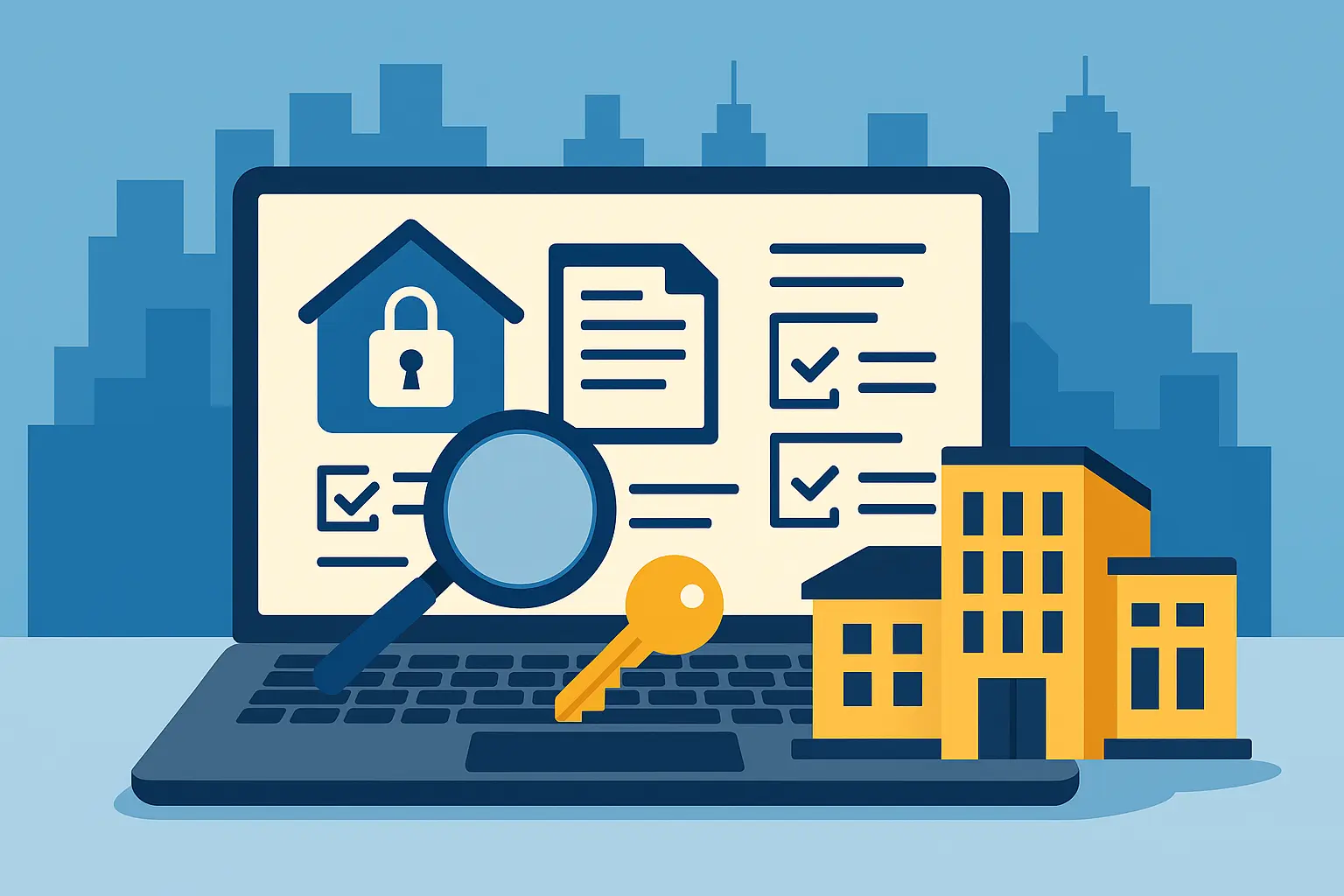To evaluate any potential mergers and acquisitions (M&A) deal, it is essential to assess risks and opportunities behind it. When performed correctly and thoroughly, due diligence delivers that understanding. It brings meaningful insights for making a grounded, informed decision toward acquisition.
In this article, you will discover the key stages of the M&A due diligence process and learn the capabilities of data rooms for due diligence that help conduct the whole process correctly and securely. In addition, you will get expert recommendations for organizing the due diligence management folder and accelerating the process timeline.
What is a due diligence process?
Due diligence is the process of evaluating the financial status, contracts, customers, and all other business-related information about the seller to gain full awareness of the business a buyer may consider merging with or acquiring.
It is a decision-making stage in the M&A deal pipeline that defines whether a buyer should pursue acquisition:
From the perspective of the business owner, due diligence investigation helps gain the truthfulness of potential buyers and ensure their expectations from the business transactions are correct. A seller may also benefit since a thorough financial analysis reveals the actual market value of the seller’s business. It may turn bigger than the initially outlined value.
This way, due diligence review is beneficial for both parties, helping both buyer and seller understand the true value and outcomes of the acquiring firm.
This process includes the following stages:
- Documents preparation. Sellers prepare all required documents, structure them, and provide access to bidders.
- Setting up a virtual data room. Arranging a secure environment for storing and sharing all documentation.
- Sharing documents with bidders. Providing potential buyers with all documents collected for due diligence.
- Documents review. Bidders check and thoroughly analyze all provided documentation to form a list of questions for the Q&A stage.
- Due diligence Q&A. It is the most intense stage of the process, during which potential buyers ask sellers questions to clarify all the details critical for decision-making.
- Reporting and compliance. At the end, it’s time to summarize the process with the due diligence report and ensure compliance with all regulations.
Here is the typical flow of processing an M&A transaction:
| M&A transaction stages | Inputs | Results |
| Prospect | Potential interest to consider acquisition | Brief opportunity description outlining the potential value |
| Initial study | Decision to pursue acquisition | Business case presentation Initial valuation High-level integration plan |
| Due diligence | Decision to pursue acquisition | Due diligence reports preparation Final valuation Revised integration plan |
| Transaction | Decision to negotiate the final SPA | Sale and purchase agreement (SPA) |
| Signing and closing | SPA signature | Communication with stakeholders Revised integration plan |
| Integration | Change of ownership and other integration activities | Synergy tracking Progress reports |
The main tasks of the due diligence process
There are a few key goals the due diligence focuses on. From the buyer’s side, the main tasks include:
- To obtain the necessary information for evaluating the deal viability
- To verify and confirm all the information about the subject of the transaction provided by a seller
- To ensure the deal complies with the deal criteria, i.e. satisfies the requirements of individual investors
- To identify potential risks of the investment opportunity to avoid fraud, financial losses, and other adverse outcomes from conducting the M&A transaction
Respectively, the tasks of the seller include the following:
- To provide all required information about the M&A transaction subject to potential buyers
- To ensure complete security and confidentiality of the provided documents and the process of due diligence
- To process all buyers’ inquiries regarding the state of the transaction object and gain high investment interest from their side
- To confirm the transparency of the M&A transaction and the spotless reputation of the transaction subject
Ultimately, a potential financial and strategic success of a potential M&A transaction directly depends on the depth and quality of the due diligence process.
Challenges and risks of due diligence
Evaluating the viability of investment can be challenging due to the number of areas to be examined and the number of documents processed. However, understanding the possible risks may help perform due diligence successfully. The most common challenges and risks of due diligence include:
- Lack of experience. If investing is not the key area of your business activities, it is possible to make mistakes in running the evaluation process, miss some vital aspects of analyzing the market value of the deal subject, or uncurse yourself into various security risks. It makes sense to apply for professional assistance.
- Lack of communication. Depending on the number of potential buyers or the specifics of a seller, both parties may experience delays in communication or a lack of response. The quality of negotiations also highly depends on how the due diligence process is arranged.
- Lack of technology. Many businesses, mostly smaller ones, decide to save money on due diligence, choosing spreadsheets and email to allocate and share critical documentation and communicate with buyers. Such an approach tends to slow down the whole process, raising its overall cost and causing numerous security and privacy risks instead.
- Time delays. Despite the generally accepted order of running the due diligence, collecting all required documentation, its analysis, back-and-forth communication may slow down the process and delay the M&A transaction closing.
- Uncertainty about what to ask. Buyers need to prepare in advance for all the issues to be uncovered during the due diligence process. Properly asked diligence questions allow buyers to investigate the deal properly, minimizing the failure risks.
- Involved expenses. Depending on the deal subject scale, the due diligence may be complex and costly. It implies expenses for the used technologies and hired assistance. However, the due diligence cost is a part of the investment that can compensate for potential losses from acquiring a company or other fixed assets.
- Incomplete information. Often, buyers deal with limited information from the seller that many consider as the seller’s evasiveness. However, improper record keeping or the absence of specific reports can also be a reason.
- Legal issues. Due diligence may expose legal issues of the company under analysis. Such cases require additional assistance from legal professionals to understand the possible risks and solutions.
Most of these challenges can be mitigated by thorough due diligence process arrangement with prior preparations for keeping the document records in proper order, using effective technology tools, and hiring professionals for assistance if necessary.
Types of due diligence
Due diligence implies evaluating numerous aspects of the M&A transaction subject. The importance of these aspects may vary depending on the subject type. Here are the main types of due diligence generally associated with M&A transactions:
- Financial due diligence
- Tax due diligence
- IP due diligence
- Operational due diligence
- IT due diligence
- Legal due diligence
Financial due diligence
It helps confirm the seller’s financial performance by analyzing the available financial documentation, cash flow, and total assets value, which includes:
- Trial balance sheets
- Operating results
- Income statements
- Business plans
- Stock history
- Budget reports
- Forecasted financial information
- Historical statements
As a rule, during the financial due diligence process, potential buyers analyze working capital, profit margins, capital expenditure requirements, historical quality of earnings (for instance, EBITDA), net debts, quality of net assets, and other financial statements. The financial due diligence process helps get a realistic valuation of the target asset, define its financial state, and understand if the purchase price is reasonable.
Tax due diligence
It is dedicated to analyzing the tax structure of the target organization and reviewing its tax returns. Buyers check the following scope of documents:
- Employment/payroll taxes
- Sales tax records
- Property tax items
- Transfer tax items.
This stage shows whether there are any tax compliance issues that a buyer will be responsible for after closing the M&A transaction. Most common problems include underreported tax liabilities, overstated net operating losses, failure to charge sales or pay use taxes, payroll tax errors, and non-filing exposures.
IP due diligence
Auditing the intellectual property owned by or licensed to the target company or business is essential. Intellectual property has become one of the key assets for numerous areas of business, such as IT, construction, automotive, and other industries. IP due diligence is aimed to provide an in-depth understanding of the following aspects:
- The quantity and the quality of the IP assets. It is worth reviewing the whole scope and defining the not utilized IP assets whose maintenance implies unnecessary expenses.
- The order of deriving ownership of the IP assets to ensure proper transfer of title to a new owner with all necessary rights.
- The processes in place to capture all the IP assets and adequately protect them.
- The existence of any third parties potentially infringing IP rights.
Failing to investigate these items can result in high wasted costs of an M&A transaction if adverse issues arise after the deal closure.
Operational due diligence
Inspecting the company’s operations helps identify the target business’s operational efficiency and analyze how its business plan is executed in current market conditions. The scope of the operational due diligence varies depending on the type of business. It generally includes reviewing:
- All operational processes
- In-house efficiencies
- Supply chain, logistics, and procurement operations
- Key personnel lists, human resources strategy, and retention
- Risk management strategy
- Cost optimization approaches
- SWOT analysis of the enterprise digitalization
Beyond M&A transactions, this type of due diligence is typical for real estate investment and private equity firms’ deals.
IT due diligence
Analyzing the IT assets of the target company helps identify its sustainability, scalability, and capabilities for further digital transformation. It also defines how the company’s digital infrastructure would integrate into a private company or portfolio of a potential buyer. The IT due diligence covers a range of domains, including:
- IT strategy
- IT project portfolio management
- Architecture and applications
- IT infrastructure and operations
- IT security
- IT team
- IT financials
As most companies directly rely on IT to maintain operations and support future performance growth, it is essential to have an adequate focus on uncovering potential risks in the target organization’s IT infrastructure.
Legal due diligence
It is one of the decisive areas of due diligence in terms of if and how an M&A transaction will move forward. It implies reviewing legal matters around private or publicly traded companies and related risks.
The scope of documentation reviewed under the legal due diligence includes:
- Contracts (customer, supply, employee, and operating)
- Organizational documentation (by-laws, stockholder agreements, limited liability agreements, etc.)
- Leases
- Intellectual property
- Potential and pending litigation
- Environmental laws
- Property and tax liabilities
- Warranties
Legal due diligence is advantageous both for buyers and sellers. It helps identify the company’s worth, prepare it for sale, and ensure transparency in the upcoming M&A transaction.
Due diligence process
The due diligence takes the central phase of the M&A process, followed up by the transaction execution:
| Due diligence process steps | |
| Preparation | Developing a due diligence plan Organizing due diligence teams Defining due diligence methods and approach Collecting and allocating documents for due diligence Setting up security guidelines and secure communication channels |
| Documentation exchange | Conducting kick-off meetings introducing the order, scope, and timeline of the due diligence process Sharing the whole scope of due diligence documentation with buyers and third parties Setting up communication between process participants |
| Document review | Analyzing the obtained scope of documentsFormulating the list of questions for the Q&A process Processing additional requests for missing documents and details |
| Due diligence Q&A | Exchanging questions and answers to clarify the details that are missing or uncertain from the provided data scope |
| The final legal back and forth | Formulating due diligence reportsFinalizing legal documentation |
The length and scope of the process may vary based on the target company size, operational specifics, industry, and other criteria. Here are the seven typical stages of the M&A due diligence process.
Step 1. Preparation
The buyer formulates the plan and organizes teams involved in the process. Then, the team defines the scope and documentation that needs to be collected. It is also important to choose the proper technologies and tools to arrange the process securely and comfortably for all the parties involved.
Setting up a virtual data room with comprehensive access and data security control is essential since you will be sharing sensitive documents that must be secured from publicly disclosed. Additionally, it provides features for proper documents arrangement and review and can be set up quickly without need for any special knowledge.
Step 2. Documentation exchange
Before sharing the documentation for review by buyers, a seller conducts kick-off meetings to underline the process steps and timeline and introduce the used environment for running the process. Then the buyer sets up proper permissions for all authorized users and shares the documentation for further review.
Step 3. Documents review
A big part of the process is thoroughly scrutinizing each document that was shared with potential buyers. It takes time to review each financial statement and other papers to end up with a comprehensive list of questions for the next step – Q&A sessions.
Sellers don’t have much control on the document review, only being responsible for arranging the relevant documentation in proper order and providing secure access to the data storage.
Step 4. Due diligence Q&A
The document review step finishes with the list of questions from each buyer. During the Q&A sessions, bidders ask all the questions while sellers provide adequate response. It is the most intensive stage that takes up to 70% of the deal time and requires much effort from both parties.
After getting questions, the seller directs them to the proper team members to obtain answers. After the seller’s approval, the answers are sent to bidders. Since multiple bidders are going through thousands of documents, it is essential to set up clear roles and workflows to process all the questions.
Step 5. Final legal back and forth
The outcome of the previous steps are formulating final due diligence reports and finalizing the legal documentation towards an M&A transaction. Compiling and analyzing findings end up with developing a target evaluation, M&A deal structure, and presenting a deal offer for further deal closure.
After the due diligence phase, the investee and investors move to preparing the transaction execution.
How long should due diligence take?
There are no strict limitations on how long the due diligence takes. It highly depends on the scope of documentation to be processed and other requirements. The process goes on until both a seller and an investor agree. Typically it takes 30 to 60 days for most small to mid-sized business deals. Here are the current practices for optimizing the timeline:
- Proper process planning. With the scope, methods, tools, and timeline outlined before the process begins, the buyer can conduct it smoothly with no operational delays or technical issues.
- Availability of information. If the seller responds to all the buyer’s document requests on time, the due diligence period can take less time. The buyer’s team should be well-prepared to deliver all required information promptly.
- Communication. Availability of both parties of the process plays a key role in how long the due diligence period may take. Make sure to have enough time and other resources for active communication during the due diligence period.
- Turnaround time. The faster buyers review the provided scope of documents, the less time it takes to perform due diligence. In its turn, the processing speed highly depends on how clear and well-organized document storage is.
- Technological advance. Using modern due diligence software for organizing and running the due diligence process significantly speeds up the process. Make sure to use a reliable, secure virtual data room for document exchange.
How to structure a due diligence management folder?
All documents for the due diligence process should be allocated in a digital folder for further sharing with buyers. Arranging a due diligence folder properly helps save business hours on tracking down the whole scope of information and documents requested by each potential buyer. Additionally, it provides investors a high level of confidence if the due diligence management folder contains all documents properly ordered, secured, and easily accessible for review.
Here is an approximate due diligence checklist pointing at the document types you should consider adding to an M&A due diligence folder:
- Corporate documents (company chart of entities and ownership, purchase agreements, ownership or sale, claims and litigation, regulatory filings, and correspondence).
- Financial statements (financial records for revenue, expense, capital expenditure, budget, accounting records, tax documentation, material and non-material assets, etc.)
- Contracts (corporate, customer, and vendor contracts and licenses, government contracts, third-party software licenses, list of all reseller, private label, or distributor relationships, etc.)
- Employee documentation (employee contracts, list of employees on leave or absence status, information about voluntary turnover, succession plans, departure risk assessments, compensation and benefit plans, etc.)
- Plans, policies, and procedures (finance and accounting policies, business plan, security and privacy practices, disaster recovery, and business continuity documentation, project management, IT processes papers, etc.)
- Products and services (marketing documentation, development and technology papers for each relevant product, user guides, technical support documents, etc.)
- Reports and analysis (marketing reports, sales pipeline, operations, customer analysis, etc.)
All documents should be appropriately grouped by category and arranged into folders with clear naming:
Sellers often store the due diligence folder in cloud-based file storage, like Google Drive or Dropbox. However, it is highly not recommended to store sensitive commercial documentation in such public storage.
To set up additional layers of privacy and security, you should opt for dedicated virtual data room solutions. Such solutions provide many useful options for arranging documents in proper order, under consistent naming, customizable styling, and smooth synchronization with local file storage. It makes due diligence folder management way easier compared to the manual approach.
Key takeaways
Due diligence is the decisive phase of the M&A transaction execution that defines the true value of venture capital investment. Arranging the process in proper order, in a secure environment comfortable for all participants, helps mitigate numerous challenges and significantly increases chances for successful M&A transaction completion. Surprisingly or not, it is commonly known that 70% of mergers fail. Most failures happen due to ignoring the human element and the inability to provide a comprehensive, detailed document overview to potential investors. Virtual data room solutions provide resources for mitigating both reasons, delivering a clear, secure, and convenient environment for conducting all the stages of the due diligence process.



